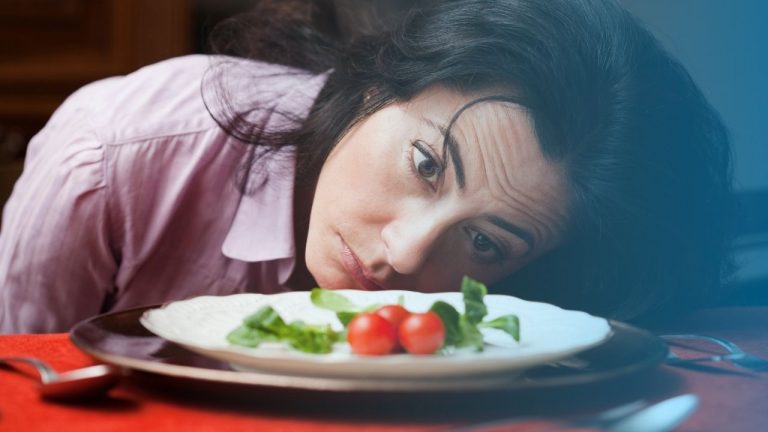The Paleo Diet - What You Need to Know
The Paleo diet is a popular diet gaining traction in recent years. The premise behind the Paleo diet is that humans should eat the same foods as their Paleolithic ancestors. This means consuming lots of meat, vegetables, fruits, and nuts. Proponents of the Paleo diet say that this way of eating can help you lose weight, improve your health, and boost your energy levels. But is the Paleo diet right for you? This blog post will discuss what the Paleo diet is, its benefits and drawbacks, and whether or not it is a good fit for you!
What is the Paleo diet?

The Paleo diet is a way of eating that mimics the way our hunter-gatherer ancestors ate. The theory is that by consuming primarily lean meats, fruits, vegetables, and nuts, we can stay healthy and avoid the chronic diseases commonplace in modern society. Proponents of the Paleo diet argue that we can optimize our health and feel our best by eliminating processed foods, grains, and dairy. While there is no one-size-fits-all approach to nutrition, the Paleo diet has provided some benefits, including weight loss, improved blood sugar control, and reduced inflammation. Whether or not the Paleo diet is right for you is ultimately a personal decision. However, if you’re looking to change your eating habits, the Paleo diet is an excellent place to start.
What are the benefits of the Paleo Diet?

The Paleo Diet is based on the premise that humans should eat the same foods our Paleolithic ancestors ate. Proponents of the diet claim that this approach to eating is more natural and can lead to improved health. Some of the benefits associated with the Paleo Diet include weight loss, increased energy levels, and enhanced digestion. The diet is also said to reduce the risk of chronic diseases such as heart disease, diabetes, and cancer. While there is some scientific evidence to support these claims, the jury is still out on whether or not the Paleo Diet is genuinely compelling. Nonetheless, it remains a popular option for improving their health and wellbeing.
What are some of the drawbacks of the Paleo diet?

The Paleo diet has become incredibly popular, touted as a healthy and sustainable way to eat. However, despite its many benefits, this diet does have some significant drawbacks. For one thing, it is often expensive and difficult to follow. Many of the foods encouraged in the Paleo diet can be hard to find and quite costly to buy, making it challenging for people on a budget. In addition, this type of restrictive diet can be challenging to stick with over time. Some people find that they end up certain craving foods or feeling discouraged by their lack of progress, making them more likely to abandon their Paleo diet altogether. Ultimately, while the Paleo diet has many benefits, it is essential to be aware of its limitations if you choose to try it yourself.
Is the Paleo diet a good fit for you personally?

There is a lot of hype surrounding the Paleo diet, but does it offer any benefits for everyone who tries it? On the one hand, there is evidence to suggest that this type of restrictive diet can be beneficial for some people. For example, studies have found that following the Paleo diet can improve insulin sensitivity in those with type 2 diabetes or prediabetes. In addition, research has shown that this diet can lead to improvements in cardiovascular health and markers of inflammation.
However, while these results are promising, they don’t necessarily mean that the Paleo diet is proper for every individual. After all, different people have different nutritional needs, and what might work well for one person may not be a good fit for another. Ultimately, it’s up to each person to consider their own health goals and decide whether following a Paleo diet makes sense for them. So if you’re thinking about giving the Paleo diet a try, it’s essential to understand what it entails and how it might affect your unique body and lifestyle. Only then will you be able to decide whether to follow this popular weight-loss trend or not.
How to follow the Paleo diet if you decide to try it?

One of the most popular diet trends is the Paleo diet, which encourages people to eat like our hunter-gatherer ancestors and focuses on nutrient-rich foods like lean meats, fresh vegetables and fruits, nuts, eggs, and wild seafood. If you’re new to the Paleo diet or want to give it a try, there are a few simple steps that can help you make this lifestyle change more manageable.
First, do your research before diving into the Paleo diet. Enrolling yourself in online seminars or reading up on recipes and meal plan ideas will help you better understand what eating Paleo entails. It’s also important to talk with your doctor or a nutritionist to ensure this type of healthier eating is right for you. That way, if you hit any snags along the way, they can provide advice and support to stay on track.
Second, begin by focusing on small changes initially rather than trying to overhaul your entire diet all at once. For example, if you typically eat lots of processed snacks or sugary treats during the day, start by trying just one healthy Paleo-inspired snack in between meals instead. You might also experiment with cooking at least one meal per week using Paleo-friendly ingredients. Once you get used to these new habits, you can gradually add more and more Paleo foods into your diet until it becomes second nature.
Third, stock your kitchen with plenty of healthy and delicious Paleo-friendly foods. When hunger strikes, you’ll have easy access to nourishing meals that fit into your new diet. Fill your pantry with nuts, seeds, nut kinds of butter, dried fruits, fresh vegetables, and lean protein sources like eggs and wild-caught fish. And don’t forget to keep a stash of easy-to-prepare Paleo meals or snacks on hand when you don’t have time to cook from scratch.
Fourth, be patient with yourself as you transition to a Paleo diet. It’s normal to feel some adjustments at first as your body gets used to eating differently. Remember that these changes are temporary and that sticking with them will help you reap the many potential benefits of following a Paleo diet long-term.
Recipes for Paleolithic eating

When it comes to recipes for Paleolithic eating, the options are endless. Popular favorites include grass-fed burgers, roasted veggies, and wild salmon with roasted sweet potatoes. Whether you’re looking for quick and easy meals or something a bit more gourmet, there’s something for everyone regarding Paleo-friendly cooking. One of the great things about this way of eating is that there aren’t any hard and fast rules for what type of foods you can or can’t eat. You could have beef one day and go completely vegetarian the next without compromising your diet. And with so many delicious and nutritious recipes at your fingertips, it’s never been easier to follow a Paleolithic diet! So why not start exploring some of these tasty options today? Your body will thank you for it.
Conclusion
The Paleo diet is a popular trend that has many potential benefits. If you’re thinking of giving it a try, do your research and talk with your doctor first. Then, focus on making small changes and stock your kitchen with healthy and delicious Paleo-friendly foods. Finally, be patient with yourself as you transition to this new way of eating. With time and practice, following a Paleo diet will become second nature. And who knows? You might even find that you enjoy it!



